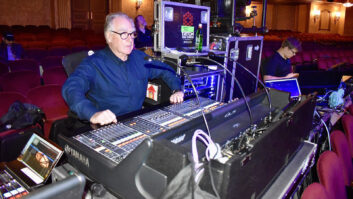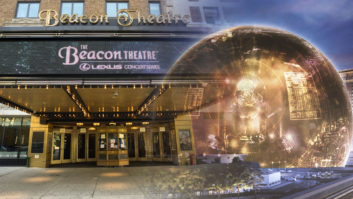The sound designer with the unenviable task of ensuring as near as possible to hi-fi-quality audio for audiences at the majority of Morricone’s Italian concerts, where venue capacity normally ranges from 5,000 to 8,000, is another Italian: live sound veteran Daniele Tramontani. His CV includes the beatification ceremony for Mother Teresa at the Vatican, several Pavarotti & Friends concerts, an Aida at Seoul Olympic Stadium (with 1,500 extras, elephants and chariot), Turin Winter Olympics ceremonies and the launch of Fiat’s new 500.
Tramontani, who also designed the rig for a recent Morricone concert at Seoul’s Olympic Gymnasium, with 7,000 spectators, explains. “I prefer to use [L-Acoustics] V-DOSC systems, and for this size of audience there are usually 16 systems per side, plus 10 subs per side [either L-Acoustic or Meyer Sound units], which we sometimes distribute across the stage-front to form a sort of ‘cardioid’ to give more uniform emission and keep sound spill onto the stage to a minimum. This gives a coverage of about 100 meters, but we add side-hangs or delay systems if we need to cope with larger crowds—up to a maximum of around 9,000 or 10,000.”
Tramontani stresses the extreme importance of the main hangs’ positioning: “This aspect is fundamental since if you position them incorrectly, the sound from the bottom systems in the arrays risks being picked up by the mics of the instruments on either side of the orchestra: first violins, piano or double basses. The hangs have to be as high, wide apart and fa-forward as possible, and the rig must have a clean, absolutely flat frequency response that doesn’t color the sound at all; otherwise, the FOH engineer would have to do a lot of unnecessary work with filters, et cetera, losing all the natural timbre of the orchestra instruments.”






